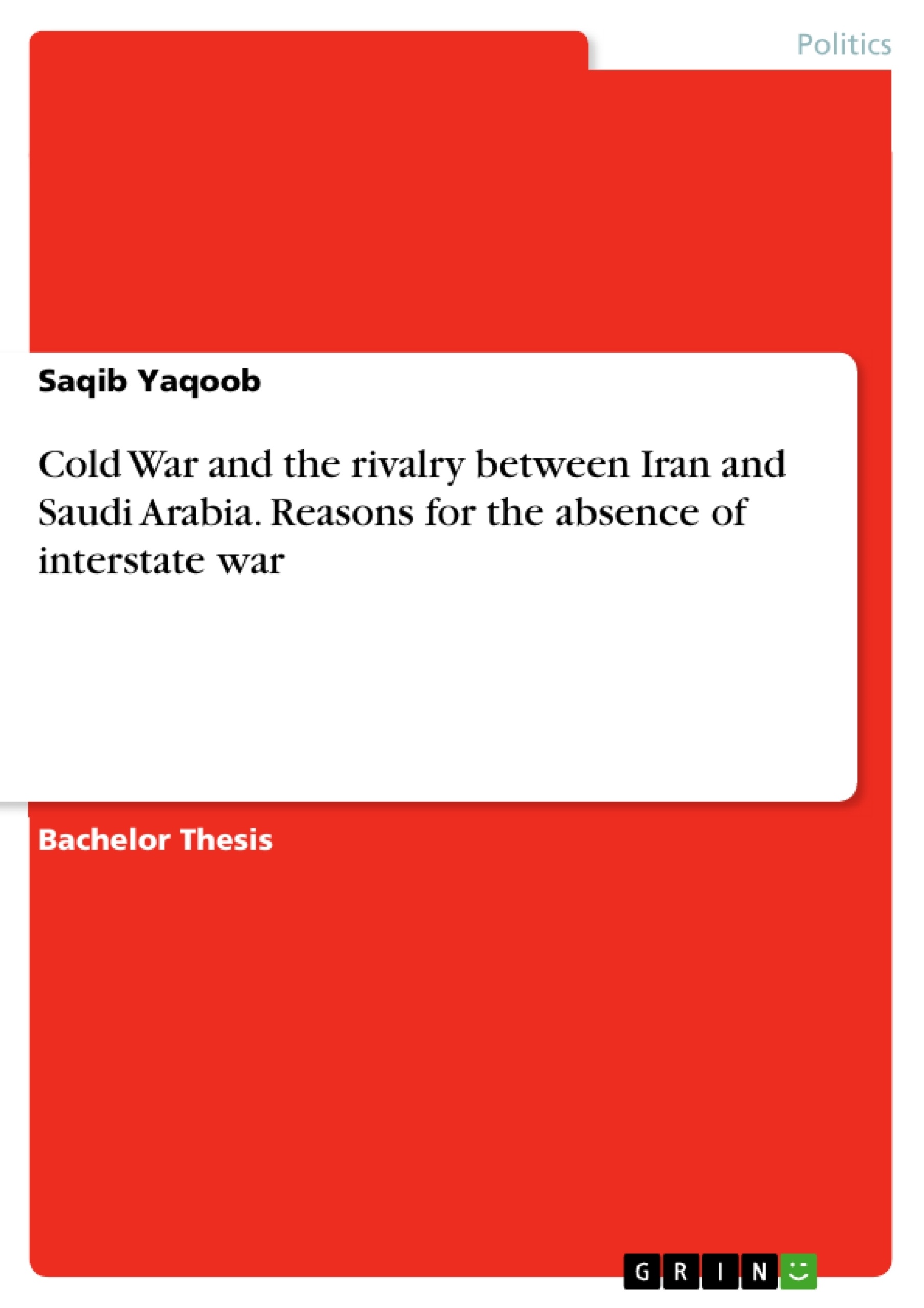This research seeks to uncover the research objectives as the reasons behind the absence of interstate war from 1979 onwards between the Middle East’s most powerful rivals, Iran and Saudi Arabia. It will define interstate warfare as a state of open and declared armed conflict between states or nations, resulting in a total of 1000 or more battle deaths. The research aims to present multiple aspects which require analysis: the conflict-zone orientation, external-power influential characteristics of the region; the regional hegemonic game in which the countries engage; the domestic and internal factors’ considerations affecting decision-making; the major internal issues at stake.
Due to the complexity of the topic, the research aims to present a comprehensive analysis based on Realist and Constructivist concepts and ideas, while also delving into relevant domestic and ideological factors. This research aims to construct an analysis of the literature on the factors affecting the presence or absence of interstate war coupled with an analysis of four different events that explains that a combination of three key elements influence the decision of whether or not the two states will confront in war. The main elements most likely to affect the possibility for interstate war for Iran and Saudi Arabia are 1. Internal factors and their effects; 2. domestic institutions; 3. Their assessment of their own military powers. In order to comprehend the importance of these elements, this research will be discussing four case studies: the Iran-Iraq war; Saudi Arabia’s involvement in the 1991 Gulf War; the events of 1987; and the events of 2015 and the years that followed. The first two represent instances in which Iran and Saudi Arabia have engaged in interstate war, and the latter represent two crises in the history of these countries which have witnessed escalation but not war. By using these four events the research seeks to uncover the reasons behind each country’s decision to go to war, as well as the mechanisms kept their moves from transforming into war.
Inhaltsverzeichnis (Table of Contents)
- Chapter 1: Introduction
- Research Objectives
- Significance of Research
- Research Questions
- Chapterization
- Research Methodology
- Research Design
- Chapter 2: Literature Review and Theoretical Framework
- Chapter 3: Foreign Policy of Iran and Saudia Arabia
- Iran's Aim and Perspective
- Saudia Arabia's Aims and Perspectives
- Chapter 4: The War Period
- Iraq-Iran War
- The Gulf War
- Chapter 5: The Escalation of Crisis
- 1987 crisis
Zielsetzung und Themenschwerpunkte (Objectives and Key Themes)
This dissertation examines the reasons behind the lack of direct war between Iran and Saudi Arabia, despite their ongoing rivalry. It analyzes the key elements that have contributed to the decreased threat of direct conflict, focusing on the internal scenarios, types of domestic institutions, and their impact, along with the assessment of each country's military capabilities.
- The dissertation examines the factors contributing to the Cold War between Iran and Saudi Arabia.
- It analyzes the internal scenarios, domestic institutions, and military capabilities of both countries.
- The research explores the war periods between Iran and Iraq, and Saudi Arabia and Iraq, highlighting the conditions that led to war initiation.
- The dissertation investigates the escalation of crisis between Iran and Saudi Arabia, examining the factors preventing direct conflict.
- It aims to conclude with a hypothesis explaining why Iran and Saudi Arabia have a low risk of interstate warfare despite their rivalry.
Zusammenfassung der Kapitel (Chapter Summaries)
Chapter 1 introduces the research objectives, significance, research questions, chapterization, and methodology, including the research design. Chapter 2 delves into the literature review and theoretical framework. Chapter 3 focuses on the foreign policy of Iran and Saudi Arabia, examining their respective aims and perspectives. Chapter 4 explores the war period, including the Iraq-Iran War and the Gulf War, analyzing the determinants leading to war initiation. Chapter 5 investigates the escalation of crisis between Iran and Saudi Arabia, specifically focusing on the 1987 crisis and the factors preventing direct conflict. The dissertation aims to conclude with a hypothesis explaining why Iran and Saudi Arabia have a low risk of interstate warfare despite their rivalry.
Schlüsselwörter (Keywords)
This dissertation examines the Cold War between Iran and Saudi Arabia, analyzing internal scenarios, domestic institutions, military capacities, and interstate warfare. It explores the Iran-Iraq War and The Gulf War, as well as the crisis escalation of 1987 and 2015-present. Key themes include Cold War rivalry, interstate warfare, domestic institutions, military capabilities, and regional security.
- Citation du texte
- Saqib Yaqoob (Auteur), 2018, Cold War and the rivalry between Iran and Saudi Arabia. Reasons for the absence of interstate war, Munich, GRIN Verlag, https://www.grin.com/document/512074



